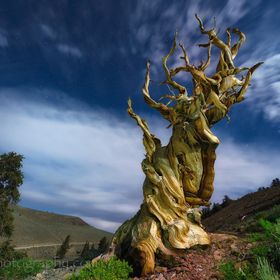
kenleephotography
FollowI love exploring mysterious sea caves along the rugged shores of California. This is a ten second long exposure photograph of the water rushing and receding wit...
Read more
I love exploring mysterious sea caves along the rugged shores of California. This is a ten second long exposure photograph of the water rushing and receding within one of the sea caves.
Read less
Read less
Views
293
Likes
Awards
Way To Go
Superb Composition
Peer Award
Top Choice
Absolute Masterpiece
Magnificent Capture
Outstanding Creativity
All Star
Superior Skill
Same photographer See allBehind The Lens
Behind The Lens
Location
I get asked where I take this photo a lot. And the answer surprises a lot of people. People will guess that it's in Mexico, Monterey CA, Oregon, or elsewhere. But no, it's in Malibu in Los Angeles County!Time
This was taken during sunrise in the summer, and the band of yellow across the sky is largely the result of this long exposure photo accentuating the warmth of the rays from the sun starting to peek over the horizon, and is not a Photoshop creation or post-processing coloring of any kind.Lighting
All the lighting is natural, and as mentioned, that includes the banding from the sun's rays, accentuated greatly by the long exposure of the photo. Long exposures tend to accentuate the differences in color in the sky quite a bit.Equipment
I used a Nikon D7000 DSLR camera, a Tokina 11-16mm f/2.8 lens, and a B+W 1.8 neutral density filter mounted on a Feisol tripod with a Photo Clam head. The camera was surrounded by one of those plastic shower caps with elastic that you sometimes get in a hotel to keep the salt water spray off the camera as much as possible, as I got down fairly low for this shot to get this perspective.Inspiration
Several things inspired me. I love the natural beauty of the sea caves in this area. But I also felt that it might look really good as a long exposure photo, as I love how the movement of the ocean water looks in a long exposure photo, how it becomes very silky smooth. The longer the exposure, the more this occurs. It creates this magical calm that I like quite a bit.Editing
Not very much. I converted the RAW file to a TIFF file in Nikon View NX2, and afterwards, I just did the usual selective sharpening and contrast in Photoshop CS4.In my camera bag
Apart from the equipment above, I usually have a few LED flashlights with gels, as I love to do a lot of light painting photography at night, where I illuminate foreground objects in natural looking - or sometimes unnatural looking - ways with the stars of the night sky or the Milky Way hovering overhead. So those are very important. I always have back-up batteries, usually another lens of some sort, such as the Nikkor 18-200mm f/2.8 VR or the Nikkor 14-24mm f/2.8 if I am using my newly purchased D610. I also have a compass, some extra munchies and drinks, a mount for my smartphone so I can use Triggertrap as an intervalometer for my camera, various plastic bags, gaffer's tape for whatever comes up, an a couple of remote shutter releases, and toilet paper. You can never go wrong with toilet paper, right?Feedback
Definitely! First of all, protect the camera with either the aforementioned hotel shower cap or something else that is made for protecting cameras from water. Salt water is extremely corrosive, and does not mix well with electronics, so you want to keep your camera dry at all costs, especially if it is not weather-sealed. The next thing is to drive your tripod into the sand hard with your weight because of the shifting sand and waves. It's really challenging to keep your tripod still for several seconds or more. The ebbing and flowing of the water, the shifting of the sand, and catching seaweed can all shift the tripod. You also want to try and have one hand on your camera or the tripod at all times in case it topples. Taking photos like this involves getting pretty low...and really wet. There are no shortcuts here. Getting low perspectives such as this involves some effort (and risk to your camera), but I think the images are worth it.



























